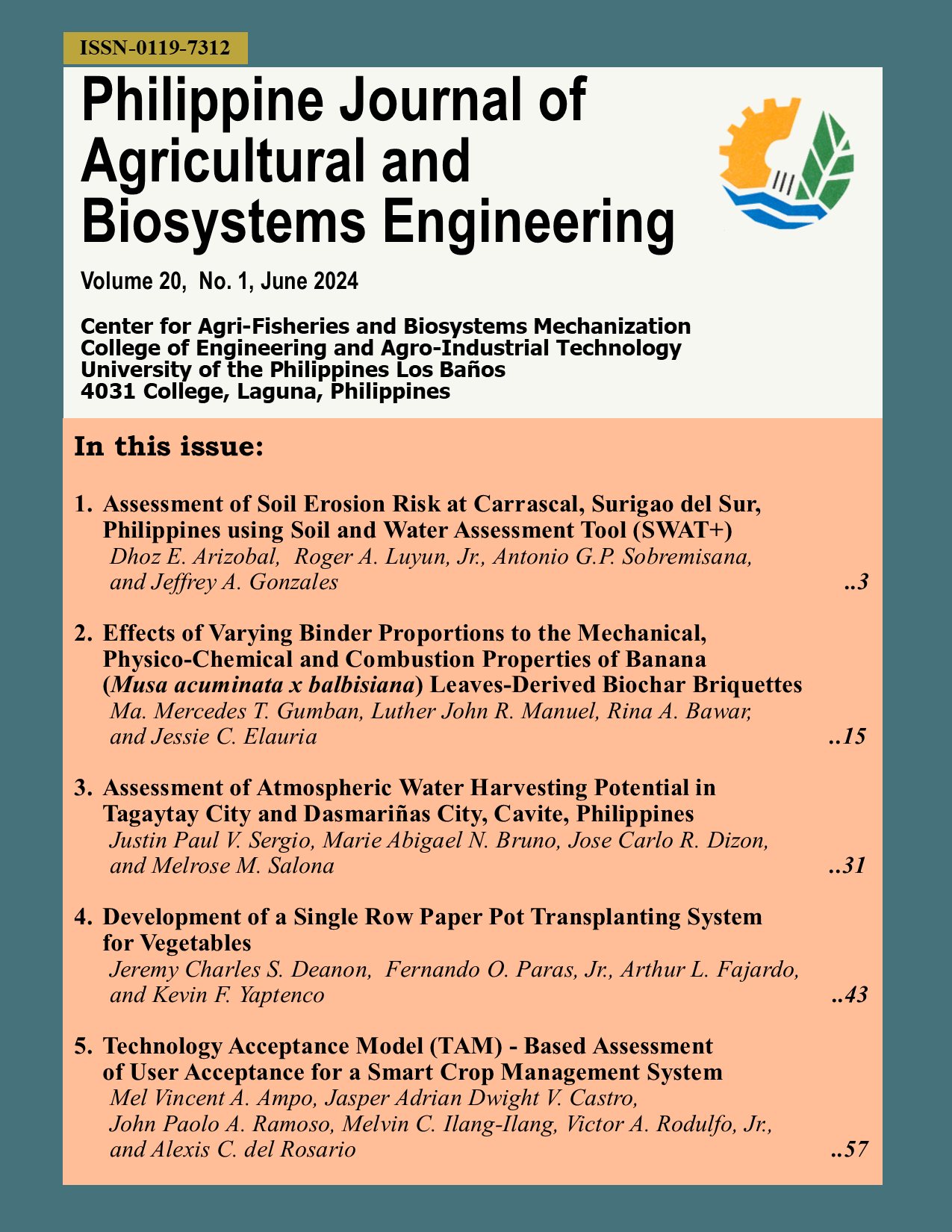Model Assessment of Soil Erosion Risk at Carrascal, Surigao del Sur, Philippines using Soil and Water Assessment Tool (SWAT+)
Abstract
Erosion causes the disruption of soil health brought about by the removal of rich topsoil. Erosion risk in Carrascal, Surigao del Sur, Philippines was assessed using the process-based modeling SWAT+. The hydrologic model of the watershed was created and characterized in SWAT based on DEM, land use, and soil thematic maps. Individual combinations of hydrologic response units (HRUs) and landscape units (LSUs) of the watershed per dataset were generated and together with climate data, average annual sediment yields for different channels and subbasins were then estimated. Sediment yield was observed to have increased in specific areas within the catchment in the year 2003, 2010, 2015, and 2017 simulations. Relatively high sediment yield was observed in the northwestern and south sections of the catchment corresponding to the steep slopes of the Surigao mountains, while no significant sedimentation occurred in the coastal and eastern sections. Two land use change scenarios, a conversion of 15% forested area to agricultural area and a 10% increase in forest area, were introduced in the simulation to assess the variation of sediment yields in each subbasin. Results show only moderate variation in sedimentation between low-yield and relatively high-yield channels subjected to the same land use changes indicating that erosion in the area is influenced not solely by land use but a combination of both land use and slope. Sediment yield simulations and scenario analysis can serve as an additional tool for the formulation of conservation policies in the locality.


